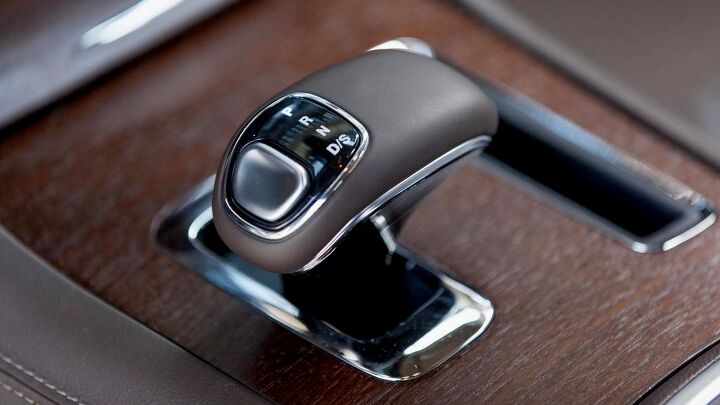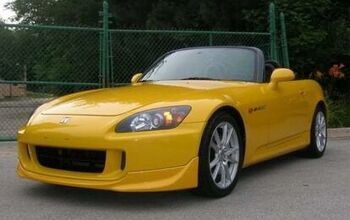Piston Slap: Faurecia's Liquid Gold?

(photo courtesy: chrysler.worldcarmodels.net)
My apologies if this comes off as a pimpatorial for Faurecia, but this question deserved to go unedited. – SM
Bryan writes:
My 300 Luxury Series has wood interior accents that shine like cabinetry with a little Liquid Gold. Worried that I might be harming them, I tried to determine the correct product for that wood. Little did I know that the wood is paper-thin and bonded to a substrate in a molding process that uses resin and compression. Faurecia SA is Chrysler’s interior supplier, and they make interiors for many other companies too ( see their Pinterest page).
They did the Citroen DS as well as the Chrysler 200 and 300. The wood forming process is called Ligneos, which applies thin wood veneers to a fiber-based substrate called Lignoflex. made by a company called Ligotock (now a subsidiary of Faurecia).
This link is pure interior eye candy. The variety of woods are stunning in this Google images result. A nice article on automotive interiors is here. I still haven’t found the safest way to make my Ligneos wood veneers shine.
But I’m fascinated how Faurecia makes some of the world’s most amazing interiors!
Sajeev answers:
Now that I know this company exists, I’m fascinated too!
That said, use whatever wood care product you wish. It’s still a veneer covered in urethane or another protective coating. If you mess it up (not likely) decent replacement parts are cheap and easy to procure on eBay, LKQ, model-specific forums and even Craigslist. Faurecia’s craftsmanship may be fantastic, but it’s still a mass-produced product for a mass-market vehicle.
I’d also recommend tinting the windows, using a reflective windshield shade and anything else you can do to protect the interior from the harmful rays of the sun.
Send your queries to sajeev@thetruthaboutcars.com. Spare no details and ask for a speedy resolution if you’re in a hurry…but be realistic, and use your make/model specific forums instead of TTAC for more timely advice.

More by Sajeev Mehta
Latest Car Reviews
Read moreLatest Product Reviews
Read moreRecent Comments
- SCE to AUX Range only matters if you need more of it - just like towing capacity in trucks.I have a short-range EV and still manage to put 1000 miles/month on it, because the car is perfectly suited to my use case.There is no such thing as one-size-fits all with vehicles.
- Doug brockman There will be many many people living in apartments without dedicated charging facilities in future who will need personal vehicles to get to work and school and for whom mass transit will be an annoying inconvenience
- Jeff Self driving cars are not ready for prime time.
- Lichtronamo Watch as the non-us based automakers shift more production to Mexico in the future.
- 28-Cars-Later " Electrek recently dug around in Tesla’s online parts catalog and found that the windshield costs a whopping $1,900 to replace.To be fair, that’s around what a Mercedes S-Class or Rivian windshield costs, but the Tesla’s glass is unique because of its shape. It’s also worth noting that most insurance plans have glass replacement options that can make the repair a low- or zero-cost issue. "Now I understand why my insurance is so high despite no claims for years and about 7,500 annual miles between three cars.


































Comments
Join the conversation
My 2015 Genesis has real solid wood trim, crafted in Italy. It has an open-pore non-glossy finish that I occasionally wipe with a damp cloth. My shiny interior trim is real aluminum, rather than plastic. To me, these things make a difference in perceived quality.
I don't like interior cleaning products, in general. I find they leave greasy films and sheens I don't want, and I'm very skeptical those films and sheens are actually protecting anything. I use very soft and damp (but not soaking wet, to avoid leaving moisture behind) cloths to clean most of the interior. For the leather, which wants to stay clean above all else, I'll use leather soap to clean, but then "rinse" with a couple applications of damp cloth to make sure the soap isn't left behind. Almost all car leather is urethane-coated, so trying to "condition" it doesn't accomplish much. This process has both my baby-mobile Forester and my seven-year-old Lexus looking on the inside like they just rolled off the showroom floor. Except, of course, for all the scratches on the Forester's ridiculously cheap glossy plastic trim bits. The only way to avoid scratching up Subaru plastic trim is to never get in the car.